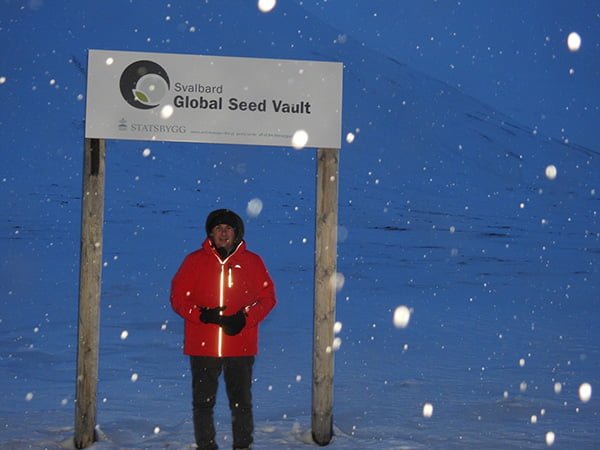The team at SARDI’s Australian Pastures Genebank (APG), based at the Waite Research Precinct, played a significant part in securing Australia’s agricultural productivity with a contribution of over 25,000 seeds deposited into the Svalbard Global Seed Vault (SGSV) in Norway on February 27.
Located deep inside a mountain on a remote island halfway between Norway and the North Pole, the secure storage facility that is Svalbard’s Global Seed Vault is custodian of more than 800,000 varieties of crop, pastures and forage species. It provides valuable seed for future breeding programs as an insurance policy for human survival in the event of a catastrophic global disaster.
APG’s contribution to the SGSV incorporated seeds from 146 countries and included historical varieties, wild relatives, and currently commercially traded varieties of Australian temperate and tropical pastures and forages including pea, chickpea, broad bean, lentils, wheat and maize, in addition to Australian native species of grasses, herbs and forage shrubs including Kangaroo grass and salt bush.


As Australia’s first national pasture and forage genetic resource centre, the APG holds one of the world’s most diverse and significant pasture and forage collections featuring over 84,000 globally unique accessions of seed.
APG’s Manager of Operations, Steve Hughes (pictured), accompanied the Australian delegation to Norway and acknowledged the significance of being a part of Australia’s largest ever deposit, which coincides with the 10th anniversary of the Svalbard Global Seed Vault.
“We are proud to be supporting Australia’s international obligations to conserve and distribute seed to the benefit of global food security,” said Mr Hughes.
“The seeds will be preserved at Svalbard in permafrost deep inside mountain facility halfway between mainland Norway and the North Pole, which has been built to stand the test of time.”
“With this valuable genetic material to agriculture and food security now safely duplicated and secured in the Svalbard Global Seed Vault, it is reassuring to know that it will be available for future generations.”
 Find out more about the Australian Pastures Genebank at: www.pir.sa.gov.au/research/australian_pastures_genebank
Find out more about the Australian Pastures Genebank at: www.pir.sa.gov.au/research/australian_pastures_genebank
